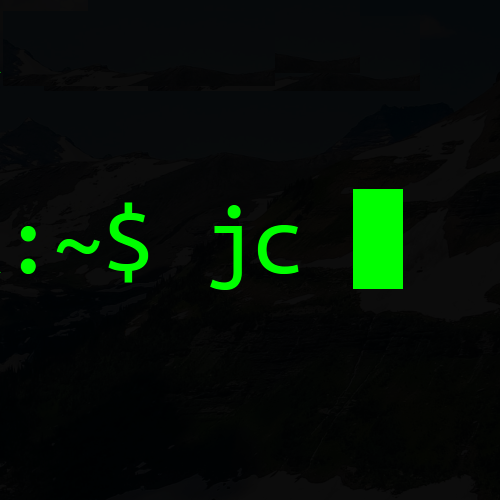This post is about sanity checking. It was written at the end of 2019, but not published until the end of 2022. The underlying change to Pytest’s cache directories was made in 3.8.1, released at the end of 2018.
TL;DR 🥱
- You can check any path, real or imaginary, with git check-ignore to see if Git will ignore it or not.
- Pytest prevents its cache directory .pytest_cache from getting into Git repositories by adding a .gitignore file inside them.
The (long) story 📜
While working on a project using Pytest, pytest --lf was not selecting all possible tests.
The --lf flag tells Pytest to run the tests that failed in the last run and those test IDs are stored in Pytest’s cache.
To ensure that I started from a clean place, I went to clean out the .pytest_cache directory. But while I was looking at that directory, I had a mild panic - I had completely forgotten to add it to project’s .gitignore file!
Had I accidentally committed the .pytest_cache dir?!
Was this why pytest --lf was being strange?!
Not in Git
Firstly, I was able to reassure myself that I’d not accidentally committed the cache directory: git log can accept a path, so when git log -- .pytest_cache came back empty, this was reassuring. It was not committed to the repo!
However, there was no entry for .pytest_cache in .gitignore.
I usually populate the .gitignore for Python projects by lifting the lines that I want from the Github gitignore repo, but I’d forgotten to copy over the line for .pytest_cache.
Why is the .pytest_cache directory being ignored by Git if I’ve not written a pattern for it into .gitignore?
Checking ignored files
My guess was one of the existing patterns in .gitignore might be matching the .pytest_cache path. To check this I went through deleting lines from the file until it was empty. But even with an empty ignore file, .pytest_cache still did not get picked up by Git!
Then I went and found that there is a super-helpful git check-ignore command. You can read some of the background of this command on Stack Overflow. This can be used to check what Git ignore thinks of a path.
So now I can call:
git check-ignore -v .pytest_cache/
And get back:
.pytest_cache/.gitignore:2:* .pytest_cache/
This means:
- There is a file .pytest_cache/.gitignore.
- Line 2 of that file is *.
- This rule is being applied to .pytest_cache/.
So - Pytest creates its own .gitignore file in the cache to prevent it being included! Phew, what a journey! 😪
A bit more investigation
So now we have an opportunity to learn a little bit about Pytest…
From some searching, I found that the inclusion of a .gitignore file in Pytest’s cache directories was a feature:
- Introduced in Pull #3982: Ignore pytest cache.
- To solve Issue #3286: .pytest_cache is showing up in projects git repos.
Previously, Pytest had renamed its cache directory from .cache to .pytest_cache. As a result, on projects where maintainers hadn’t updated their ignore files, the new cache directories had been committed by accident.
In looking at the Pytest team’s response, what’s interesting to me is the trade-off between:
- Pytest developers do nothing. Let Pytest users update their .gitignore files or other SCM ignore methods, or…
- Pytest developers take some action. Prevent the folder being added to SCM systems or some other fix.
In the discussion on the Issue, this comment shows the idea of a .pytest_cache/.gitignore file coming into being:
another devious idea - if we add a .gitignore with the content * then the folder is protected as well and people dont need to track manually
But all decisions have consequences.
Less might be more
For me I would prefer to follow the Zen of Python:
Explicit is better than implicit.
I would vote for: Let Pytest users update their ignore mechanisms.
This would mean:
- Pytest SCM users learn that .pytest_cache exists and add it to their .gitignore or similar.
- Confusion is avoided because no directories are unexpectedly ignored by Git. (Confusion as you can see in my case above and also in this issue.)
- Other side effects do not occur, like this ones mentioned in the issue above regarding Debian packaging or search.
To the wider open source issue, I think that projects that do less will last better than projects that do too much. I would generally take trade-offs where less is done rather than more.
Reflection 2022
Much of this post was written in 2019, much has happened, my confusion has lessened.
If you ask “did the Pytest team do the right thing by adding .gitignore to the newly named .pytest_cache directories?”, then my answer is yes.
It seems to have been a successful strategy and is even used by mypy with a hat-tip to Ronny Pfannschmidt’s original comment suggesting the idea.
While editing this post, I found two quotes from Ronny that I’ll end with:
we would be more than happy to have a better way (like xdg)
but lets be realistic here - the added .gitignore protects beginner uses from a very common mistake, that’s why its there
its a practical solution to a practical problem and has a interference component
…
from my pov its an absolutely acceptable tradeoff to prevent a lot of developer pain by inflicting a extra step on package maintainers
Nice one Pytest team for looking after new developers! 🙌
